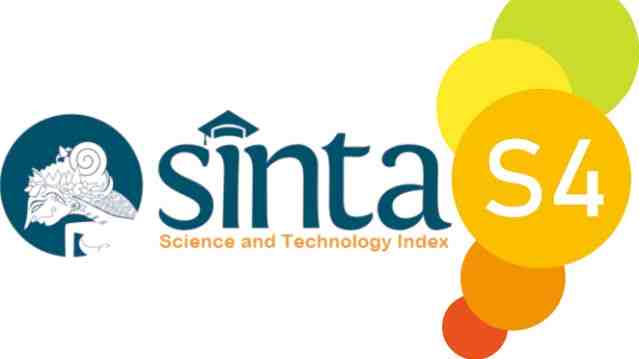The Evolution of Arebbe: Tradition in the Face of Urban Change
DOI:
https://doi.org/10.62730/syaikhuna.v16i02.7424Keywords:
Tradition, Arebbe, urban society, continuity and change, John Obert VollAbstract
The Arebbe tradition is a form of almsgiving where the reward is intended to be sent to deceased relatives. The procedure involves sending food and dishes to religious figures residing near the executor's residence, as well as requesting prayers for deceased relatives. This tradition continues among the urban Bangkalan community even though geographically, Bangkalan Regency is close to the metropolitan city of Surabaya. This research aims to explore the Arebbe tradition and its procedures, how the tradition persists and evolves, and how it can continue to survive using the concept of the four basic styles of action initiated by John Obert Voll. This research is a descriptive qualitative study with a phenomenological approach. Data collection techniques include unstructured interviews, observation, and documentation. The data analysis technique for this research utilizes the Moustakas model, simplified by Cresswel. The research found that the Arebbe tradition can continue to thrive among the urban Bangkalan community due to four supporting factors: first, adaptationism, such as replacing home-cooked meals with store-bought dishes.; second, the authority of the text as religious legitimacy, with a theological basis or postulates from religious texts supporting the Arebbe tradition; third, conservative action, consisting of advice and messages from elders to continue maintaining Arebbe traditions; fourth, personal aspects or charismatic figures supporting the Arebbe tradition among the urban Bangkalan communityReferences
Afgani, M. W. (2023). Pendekatan Fenomenologi Dalam Penelitian Kualitatif. INNOVATIVE: Journal Of Social Science Research, 3(5).
Aisya Putri Handayani, Jap Tji Beng, Febynola Tiara Salsabilla, Stefania Morin, Thalia Syahrunia Suci Ardhia, & Valensia Audrey Rusli. (2024). Hilangnya Budaya Lokal di Era Modern dan Upaya Pelestariannya dalam Perspektif Pancasila. Dewantara?: Jurnal Pendidikan Sosial Humaniora, 3(4), 178–188. https://doi.org/10.30640/dewantara.v3i4.3452
Akhmad Khoirul Zakaria, S. Q. A. (2022). Tradisi Arebbe Di Desa Glagahwero Kecamatan Kalisat Kabupaten Jember Dalam Kajian Living Hadis. Proceeding of Annual Conference on Islamic Heritage and Culture in Southeast Asia, I. 130–137.
Baijuri Alwi, E. S. (2023). Analisis Kebijakan Perda Kabupaten Bangkalan Sebagai Kota Dzikir Dan Sholawat. Cakrawala, 6(2), 869–874.
Dewi, A. B., & Wikrama, A. A. N. A. W. B. (2023). ADAPTASI MASYARAKAT ADAT TERHADAP MODERNITAS. Jurnal Ilmiah Cakrawarti, 6(1), 130–140. https://doi.org/10.47532/jic.v6i1.810
Donny Gahral Adian. (2010). Pengantar Fenomenologi. Koekoesan.
Eka Imbron. (2024). Alasan mempertahankan tradisi Arebbe [Komunikasi pribadi].
Fadli, M. R. (2021). Memahami desain metode penelitian kualitatif. Humanika, Kajian Ilmiah Mata Kuliah Umum, 21(1), 33–54. https://doi.org/10.21831/hum.v21i1. 38075. 33-54
Fera Andriani Djakfar, P. A. P. (2020). Ngabulâ Vis-À-Vis Modernity: Tabarruk Practice in Bangkalan Pesantren. Karsa: Journal of Social and Islamic Culture, Vol. 28, No. 2, 337–362.
Habsatun Nabawiyah. (2018). Tradisi Arebbe dalam Masyarakat Situbondo, Studi Living Hadis. Al-Bayan: Jurnal Ilmu Al-Qur’an Dan Hadist, I(1), 48–65. https://doi.org/10.35132/albayan.v1i1.3
John Obert Voll. (1997). Politik Islam Kelangsungan dan Perubahan di Dunia Modern (1 ed.). Titian Ilahi Press.
John. W. Cresswell. (2015). Penelitian Kualitatif dan Desain Riset: Memilih di Antara Lima Pendekatan. Pustaka Pelajar.
Lenaini, I. (2021). TEKNIK PENGAMBILAN SAMPEL PURPOSIVE DAN SNOWBALL SAMPLING. 6(1).
Lexy. J. Moleong. (2007). Metodologi Penelitian Kualitatif Edisi Revisi. Remaja Rosdakarya.
Mulyadi, A. (2012). Kalender Ritual Masyarakat Muslim Sumenep Madura. 9(1).
Nurcahaya, N. (2021). Kitab Shahih Bukhari (Kajian Tentang Identitas dan Relevansinya Dengan Fase Kodifikasi Hadis). Al-Fikru: Jurnal Ilmiah, 14(2), 92–99. https://doi.org/10.51672/alfikru.v14i2.34
Rifa’i, Y. (2023). Analisis Metodologi Penelitian Kulitatif dalam Pengumpulan Data di Penelitian Ilmiah pada Penyusunan Mini Riset. Cendekia Inovatif Dan Berbudaya, 1(1), 31–37. https://doi.org/10.59996/cendib.v1i1.155
Sanusi Ulath, & Muh Fathoni Hasyim. (2023). The Relationship Between Religion and Culture During the 7th Shawwal Celebration in Morella, Central Moluccas. Jurnal Penelitian Keislaman, 19(1). https://doi.org/10.20414/jpk.v19i1.6634
Sisca Tri Wahyuni. (2024). Tradisi arebbe di kalangan anak muda [Komunikasi pribadi].
Siti Sumarlik. (2024). Perubahan tradisi arebbe [Komunikasi pribadi].
Subair, N. (2019). Dinamika Sosial Masyarakat Urban. Yayasan Inteligensia Indonesia.
Sugiyono. (2007). Metode Penelitian Kuantitatif, Kualitatif dan R&D. Alfabeta.
Suyanto. (2019). Fenomenologi Sebagai Metode Dalam Penelitian Pertunjukan Teater Musikal. Lakon, Jurnal Pengkajian & Penciptaan Wayang, Vol. XVI(No. 1), 26–32.
Wiraguna, S., Purwanto, L. M. F., & Rianto Widjaja, R. (2024). Metode Penelitian Kualitatif di Era Transformasi Digital Qualitative Research Methods in the Era of Digital Transformation. Arsitekta?: Jurnal Arsitektur dan Kota Berkelanjutan, 6(01), 46–60. https://doi.org/10.47970/arsitekta.v6i01.524
Zubaidi Mohammad Ahdie. (2025). Bentuk-dan tujuan tradisi Arebbe [Komunikasi pribadi].
Downloads
Published
How to Cite
Issue
Section
License
Copyright (c) 2025 Fera Andriani Djakfar Musthafa

This work is licensed under a Creative Commons Attribution 4.0 International License.





